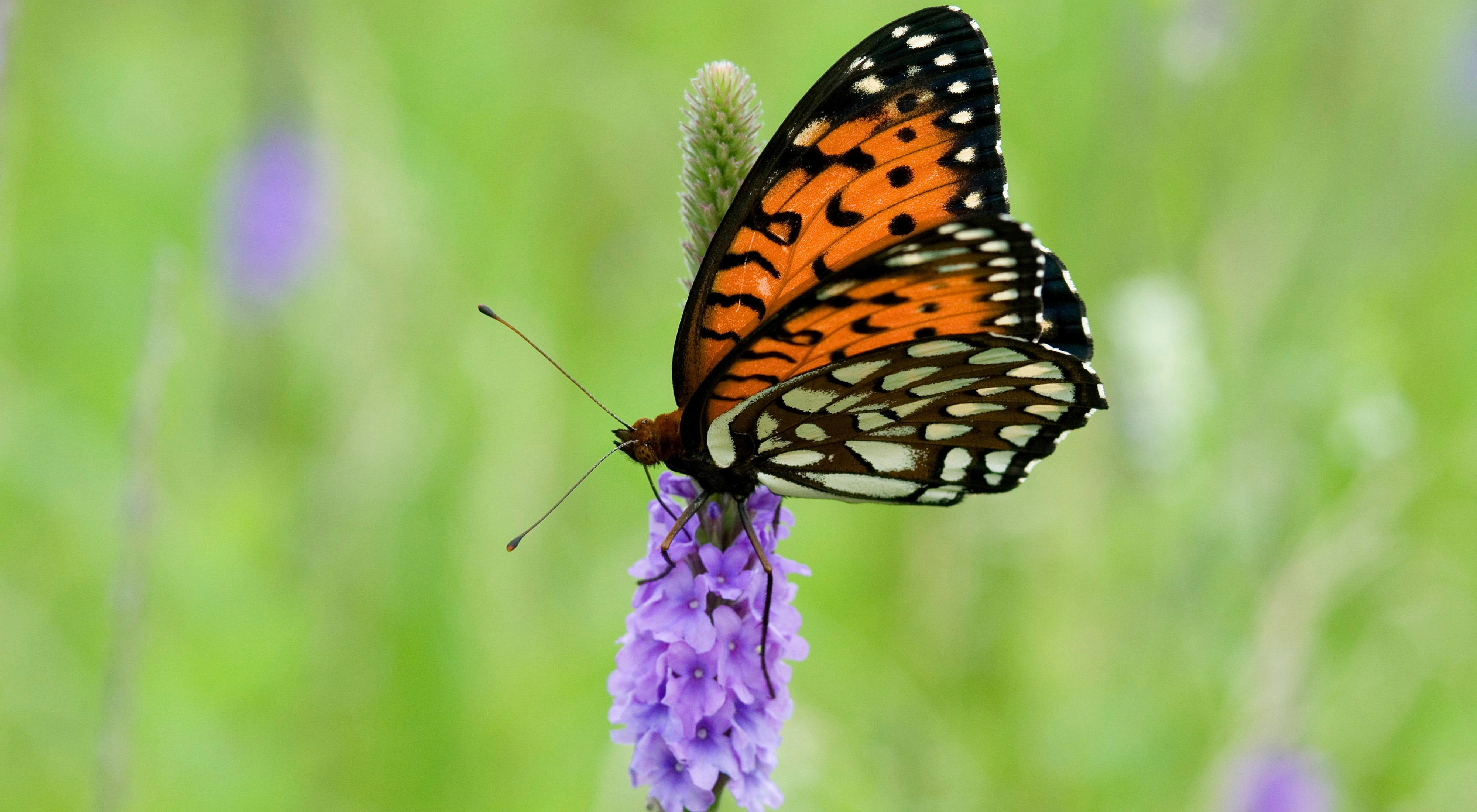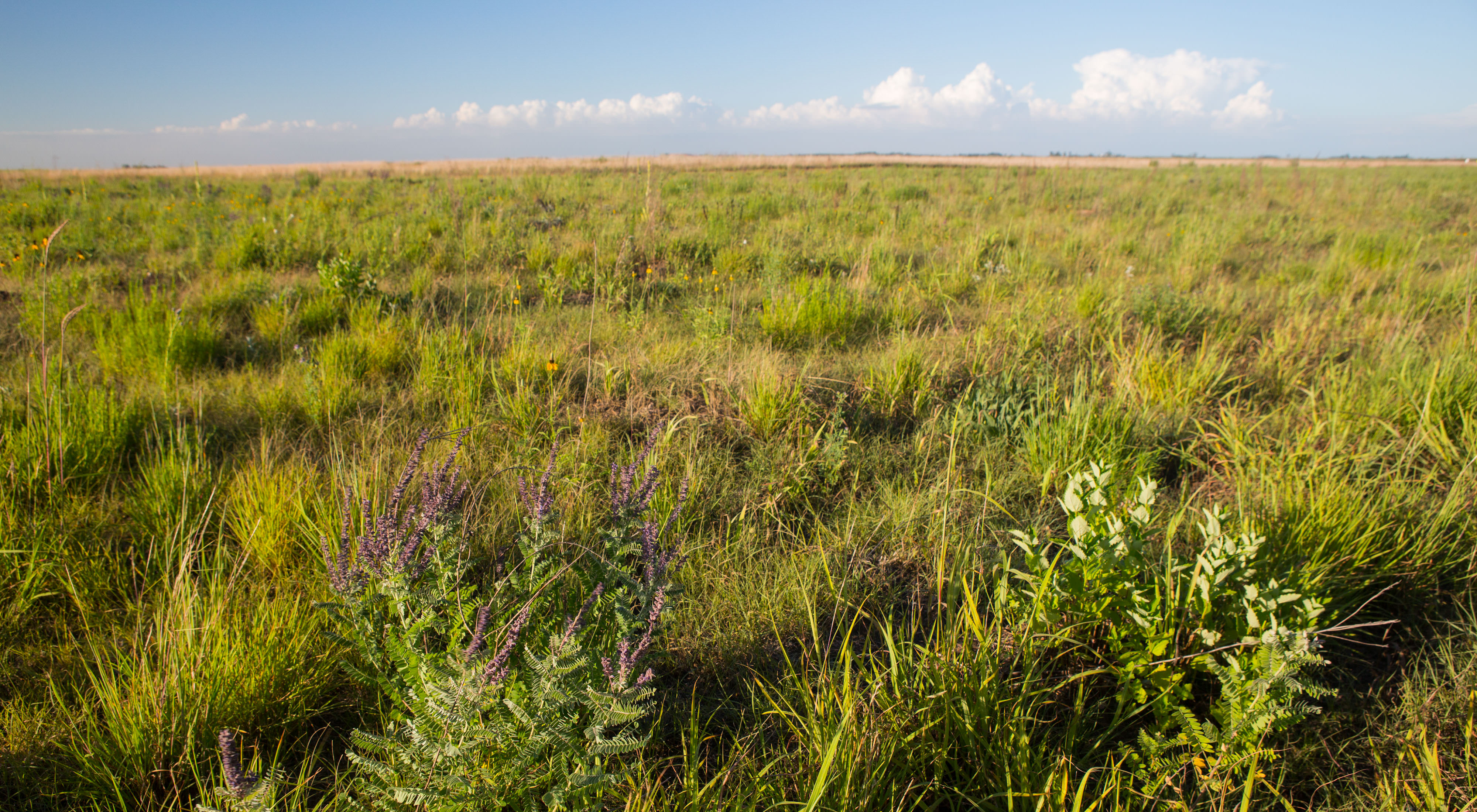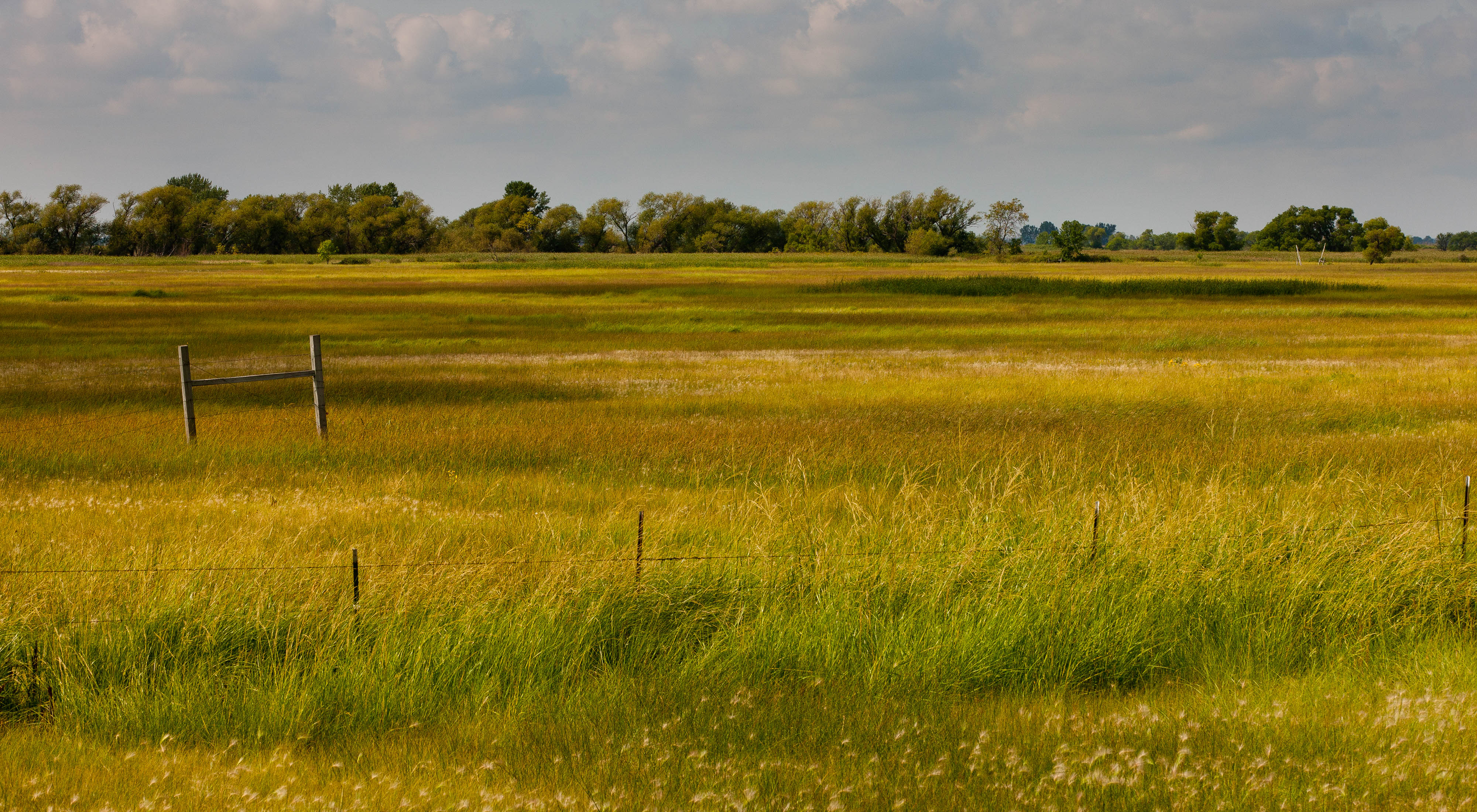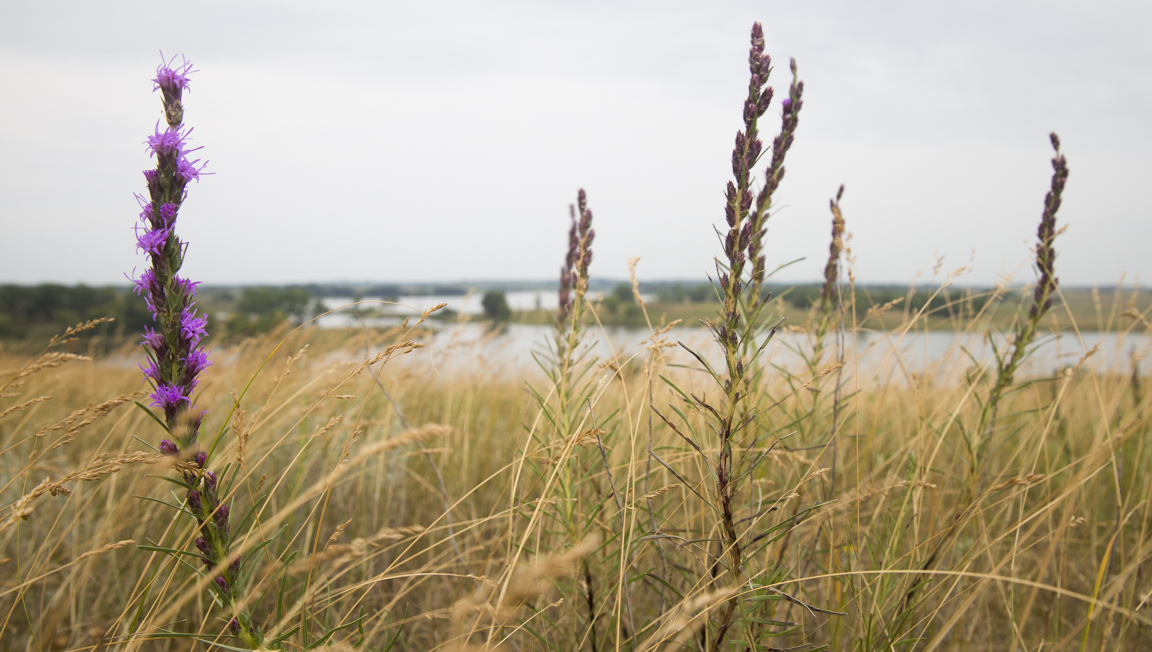Guides to Prairie Restoration in Minnesota
How to transition your land to a prairie that meets your needs.
Prairie restoration on private lands will play an important role in reconnecting isolated fragments of prairie that once covered vast areas across western Minnesota, while also supporting conservation and providing economic and recreational opportunities for landowners.
Grazing, wildlife habitat, and improving water quality and quantity are just a few reasons why you might restore prairie on your land. Find out what steps to take to achieve your restoration goals.

While there are some basic steps common to most prairie restorations, not all restorations are the same! The specific sequence of restoration activities, plant selection, and time and financial investment required will depend on the particular conditions of your site, as well as your goals for the restored site. Decisions you might face as you plan your restoration include:
- How and when to remove undesired vegetation and prepare your site for seeding?
- What plant species to include in your restoration seed mix?
- Are additional steps, such as tile and ditch removal, required to restore your site?
- How to manage the site after seeding to ensure that your prairie establishes and maintains the desired diversity and productivity into the future?
The following restoration guides are designed to help landowners make these decisions, and to provide a general idea of the activities, time and cost required for some common types of prairie restoration in Western Minnesota. The guides were developed to support implementation of the Minnesota Prairie Conservation Plan, however, much of the content is relevant more broadly to prairie restoration in the Upper Midwest.

To use these guides, you will need to conduct a general assessment of the soil moisture levels and existing vegetation on your site and decide whether your primary goal is to support income generating activities (“utility restorations”) or wildlife and plant diversity (“conservation restorations”). Refer to the document Choosing a Restoration Guide for Your Project for more information and to select the restoration plan(s) best suited to your project.
Restoration Guides
Refer to Choosing a Restoration Guide for Your Project to determine which restoration guide is right for your project. Then download the restoration guide and check out the example seed mixes and additional resources below to begin planning!
Utility Prairie
Crop to Utility Prairie
Annual-Dominated Field to Utility Prairie
Invasive-Perennial Dominated Field to Utility Prairie
Degraded Grassland to Utility Prairie
Woody-Invaded Prairie to Utility Prairie
Conservation Prairie
Crop to Conservation Prairie
Annual-Dominated Field to Conservation Prairie
Invasive-Perennial Dominated Field to Conservation Prairie
Degraded Grassland to Conservation Prairie
Woody-Invaded Prairie to Conservation Prairie
Utility Meadow
Crop to Utility Meadow
Annual-Dominated Field to Utility Meadow
Invasive-Perennial Dominated Field to Utility Meadow
Degraded Grassland to Utility Meadow
Woody-Invaded Meadow to Utility Meadow
Conservation Meadow
Crop to Conservation Meadow
Annual-Dominated Field to Conservation Meadow
Invasive-Perennial Dominated Field to Conservation Meadow
Degraded Grassland to Conservation Meadow
Woody-Invaded Meadow to Conservation Meadow
Resources for Selecting Restoration Seed Mixes
It’s important to select a seed mix that is well suited to your site conditions and project goals. These example mixes below and the Minnesota State Seed Mixes are a handy place to start, but consult with a restoration professional to design an effective mix specifically tailored for your project. The Native Seed Mix Design Worksheet can be used to select additional species as substitutions or to increase diversity in a mix. Additionally, for roadside restorations, Native Seed Mix Design for Roadsides may be a helpful resource.
Utility Prairie
Utility Prairie – Mesic to dry, Statewide
Conservation Prairie
Conservation Prairie – Mesic, Northwest
Conservation Prairie – Dry, Northwest
Conservation Prairie – Mesic, Southwest
Conservation Prairie – Dry, Southwest
Utility Meadow
Utility Meadow – Wet-mesic (wet prairie), Statewide
Utility Meadow – Wet (sedge meadow), Statewide
Conservation Meadow
Conservation Meadow – Wet-mesic (wet prairie), Statewide
Conservation Meadow – Wet (sedge meadow), Statewide
Restoration Professionals
Consult with a restoration professional in your region to help you plan a restoration that will meet your project goals. Restoration professionals can assist with a wide range of restoration services, including site assessment, seed mix design, and vegetation removal and management.
Regional and Local Resource Managers:
Prairie Plan Local Technical Teams (Map above)
Directory of MN Soil and Water Conservation Districts
Private Contractors:
A list of private seed and restoration contractors operating in different parts of Minnesota can be found at http://www.dnr.state.mn.us/gardens/nativeplants/suppliers.html.
Additional Prairie Restoration Resources
Want to learn more about prairie restoration in Minnesota? Check out the following resources!
Going Native: A prairie restoration handbook for MN Landowners – Minnesota Department of Natural Resources.
Implementing the Minnesota Prairie Conservation Plan in Landscapes of Western Minnesota – The Nature Conservancy. For more information about how and why the prairie restoration guides and example seed mixes were developed, refer to Chapter 7 and Appendices 3 and 4.
Minnesota Prairie Conservation Plan - The Nature Conservancy.
Minnesota Wetland Restoration Guide – MN Board of Water & Soil Resources.
Prairie Protection & Resources for Landowners – MN Department of Natural Resources.
Restoring Prairie Wetlands: An Ecological Approach. Galatowitsch, S. M. and A. G. van der Valk. 1994. Iowa State University Press.
Native Vegetation & Seed Mixes – MN Board of Water & Soil Resources. Includes resources and guidelines for revegetation of prairies and wetlands, as well as the Minnesota State Seed Mixes.
Seeding Mixes
Native Vegetation
The Tallgrass Prairie Center Guide to Prairie Restoration in the Upper Midwest. Smith, D. 2010. University of Iowa Press, Iowa City, IA.
The Tallgrass Restoration Handbook for Prairies, Savannas, and Woodlands. S. Packard and C. F. Mutel, editors. 2007. Island Press, Washington, D.C.
The Restoration Guides and resources described on this webpage are adapted from a project led by Laura Phillips-Mao and Susan M. Galatowitsch of the University of Minnesota. That project was funded by a grant from the Minnesota Environment and Natural Resources Trust Fund as recommended by the Legislative-Citizen Commission on Minnesota Resources (LCCMR 092C). The Trust Fund is a permanent fund constitutionally established by the citizens of Minnesota to assist in the protection, conservation, preservation, and enhancement of the state’s air, water, land, fish, wildlife, and other natural resources. Currently 40% of net Minnesota State Lottery proceeds are dedicated to building the Trust Fund and ensuring future benefits for Minnesota’s environment and natural resources.
Additional funding for an update and redesign of the guides was provided by a Working Lands Initiative grant from the Minnesota Department of Natural Resources.

We Can’t Save Nature Without You
Sign up to receive monthly conservation news and updates from Minnesota.





